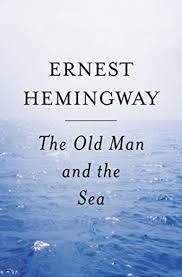"Free Will" by Mark Balaguer: did I choose to buy it?
In the book “The Forgotten Soldier” Guy Sajer describes a
moment when his rifle company is sheltering from Soviet artillery and guns in a
concrete storage cellar. An order comes down to attack. The Top Sergeant tells
the men to count off by threes. Sajer is a One.
The sergeant tells the Threes to get ready to attack. In two minutes they run from the basement. In
another ten minutes they are all dead or wounded.
The Twos are next. As they run into the hail of Soviet fire,
Sajer thinks about what it means that the Threes went first. Why them? Usually the Ones would go first and
he would be dead. His assault wave took
the Soviet stronghold in the middle of the village. After this brief victory, the Germans would continue
the year-long retreat to Germany and utter defeat.
Sajer survived that day and the war because he was a One on
the day the Threes went first. Not
surprisingly, Sajer sees his life as dominated by fate rather than free will.
As a soldier in a retreating Army, his life is a series of terrible moments. In
another scene, he describes the relief of climbing into a truck after 20 miles
of marching. The relief turns into terror when the convoy is attacked by Soviet
fighter-bombers. Then there are all the horrors of his one leave to go home.
In the military, I have met more fatalists than in civilian
life, or at least people who are more open about their belief. The most usual expression of this belief was,
“If a bullet has mine name on it, there’s nothing I can do about it.” I can
understand this belief, but so much of the training we had was how to avoid the
bullets, bombs and rockets that were aimed at us.
For a year during my tour in West Germany in the 70s, I
taught a monthly class in how to survive what are now called WMDs. I shared the Army’s best advice on how to
live if our position was hit with chemical, biological or nuclear weapons. If it is somehow possible to survive a nuke,
can there really be just one bullet with NEIL on it? Or would it be my full
name? When I was a tank commander, would it be an armor-piercing cannon shell
with my name on it?
All my life, the question of Free Will versus Fate has been
in the back of my mind. Early in my life, as well as I could understand the
question, I would have said fate guided my life. After I joined the military, life seemed to
be a series of endless possibilities. I
went to college, picked a job I liked, had kids, became a late-life athlete,
traveled to every inhabited continent, a paragon of choice.
Last year, I read a book titled “Free Will” by Mark
Balaguer. I bought the book in the MIT
Bookstore when I was in Cambridge for the annual Ig Nobel Prize Ceremony. I had
an hour so I went to the bookstore and bought the book on a whim. Was it a whim? It is a subject that interested
me all my life. I went to a bookstore that had only academic books. Was fate
lurking in my mind?
Whether picking the book was fate or free well, Balaguer,
helped me to see that the gap between Sajer and I, between those who believe an
invisible fate controls their life and those who believe everything is free, is
not so great as I thought.
Balaguer looks at both sides of the question from a
philosophical viewpoint, and then from a practical viewpoint. How many choices can one person actually make
in a day-week-month-life? Not that
many. The human condition,
circumstances, lifespan, and every previous choice we have made, combine to
constrain all of our future choices. So real choice is relatively rare.
Each time I have made a big choice, I have accepted a
thousand small restraints. When I decided to re-enlist in the Army National
Guard, one weekend a month was outside of my control. Then two weeks in the
summer. Then a year in Iraq. A lot of
choices I might have had, I no longer had. Certainly in Iraq, I had no choice
in what to wear, where to live, when to eat, and so many other things.
I don’t know if there is an answer to the question of fate
or free will, except in very specific circumstances. But it is a question I seem fated to keep
thinking about.
-->























